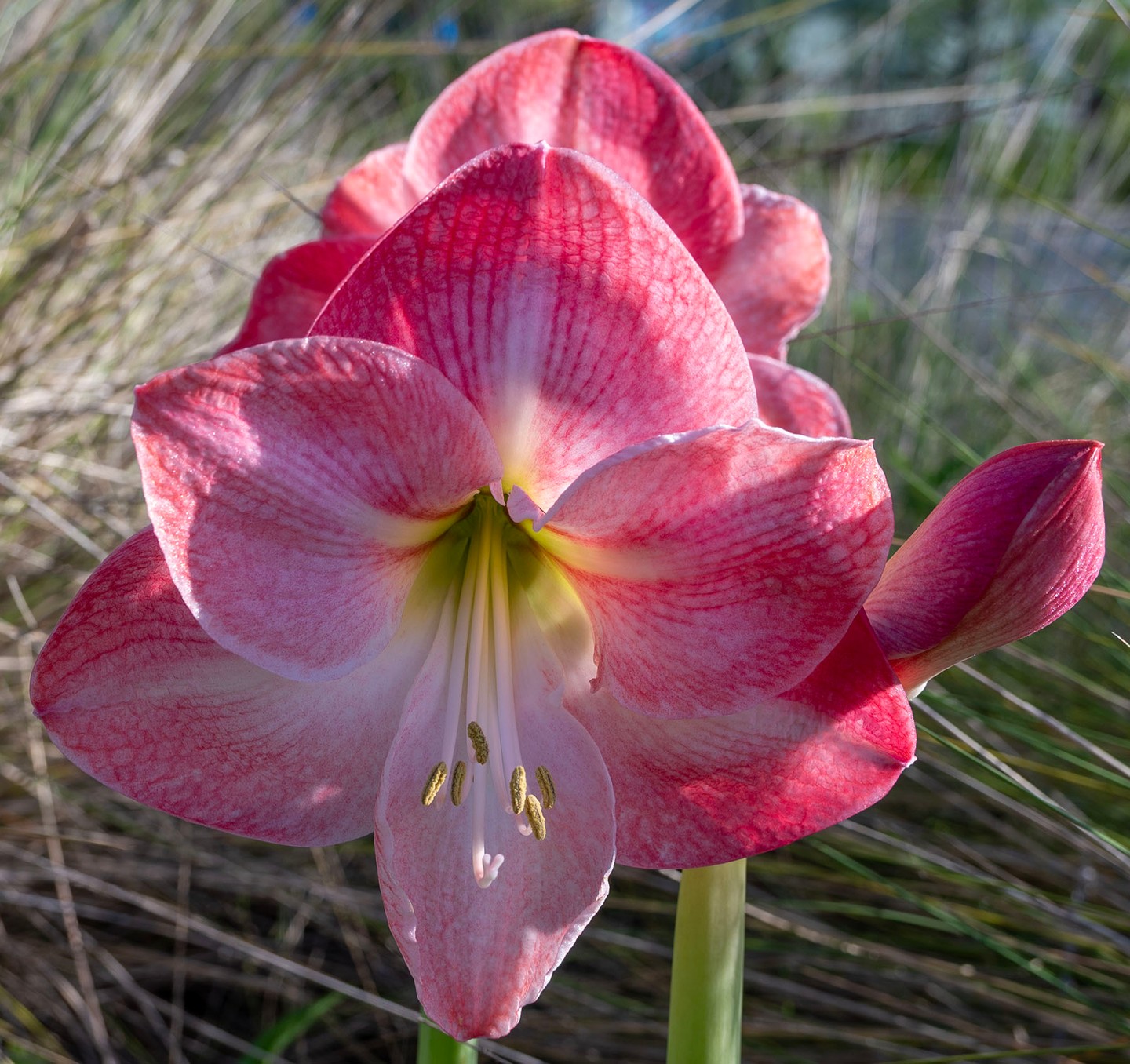- Characteristics and cultivation of the Amaryllis flower
- Ecological significance and pollinator relationships
- Adaptation and survival in coastal North Carolina
- Conservation and biodiversity in pollinator gardens
- Educational opportunities and community engagement
The Amaryllis, with its vibrant blooms, often takes the spotlight in any garden. Known for their large, colorful displays, Amaryllis flowers are beloved by gardeners and nature enthusiasts alike. Originating from South America, particularly from the Andes mountains, these stunning flowers have adapted to various climates, making them popular worldwide. Their scientific name is part of the genus Hippeastrum. Despite common misconceptions, true Amaryllis are from a different genus, yet the name has stuck in popular usage.
Amaryllis bulbs are noted for their resilience. They thrive in well-drained soil and prefer a mix of loam, sand, and organic matter. With moderate watering and partial sun, these bulbs will bloom from late fall to early spring. The vibrant red, pink, white, or bi-colored flowers emerge on sturdy stems, creating striking displays. In coastal North Carolina, the climate is favorable for these plants, allowing them to be left outdoors, where they often become perennials, multiplying over time. These attributes make them an excellent feature in pollinator gardens.
The ecological role of Amaryllis in a pollinator garden cannot be understated. Their bright flowers attract a variety of pollinators, including bees, butterflies, and birds. This attraction supports essential ecosystem functions by aiding in the reproduction of numerous plant species. Bees, particularly, are drawn to the nectar, facilitating cross-pollination and genetic diversity. Butterflies, with their gentle landing on the petals, also play a critical role in pollination. This dynamic interaction is crucial for maintaining ecological balance and biodiversity within gardens and wild habitats.
Adaptation to coastal North Carolina has been an interesting aspect of Amaryllis cultivation. The region’s mild climate, combined with sandy soils, provide suitable conditions for these bulbs to flourish. They have evolved to withstand periods of both drought and excessive moisture, making them versatile. Moreover, their ability to store nutrients in their bulbs allows them to survive and rebound even after harsh conditions. This adaptability is not only a testament to the resilience of nature but also illustrates the importance of planting species that align with the local environment to ensure sustainability and ease of care.
Contributing to conservation and biodiversity, pollinator gardens incorporating Amaryllis flowers help create vibrant ecosystems. By providing habitat and food sources for pollinators, these gardens play a pivotal role in preserving threatened species. Furthermore, they offer a refuge for pollinators in urban settings, where natural habitats are often fragmented. The success of these gardens is vital for maintaining the health of pollinator populations, which are crucial for global food security and biodiversity. Such spaces also enhance urban biodiversity, serving as green oases that foster many species.
Educational initiatives geared towards community engagement are key to fostering a long-term commitment to conservation. Attractions like aquariums and botanical gardens can serve as educational platforms to expand awareness. They offer hands-on learning opportunities and programs for individuals of all ages. Participants might engage in planting workshops, learn about pollinator interactions, or explore the role of native plants in local ecosystems. These activities can ignite a passion for environmental stewardship and inspire future generations to become proactive in conservation efforts.
The robust nature of the Amaryllis flower and its role in ecosystems highlights the integration of botany, zoology, and wildlife conservation. As a touchstone for ecological education, the Amaryllis encourages appreciation for plant and pollinator relationships. Visitors to gardens or attractions featuring these flowers can experience firsthand the beauty and complexity of nature’s interconnected systems. By understanding and participating in conservation initiatives, individuals contribute significantly to preserving biodiversity, supporting pollinator health, and enriching their communities.
*****
Source Description
🌸🌷🦋🌱💐🎀🌿 This beautiful, bright, and happy Amaryllis flower was an early bloomer in our pollinator garden last year. We’ll see if it returns this year!
These big, hardy bulbs grow well here in coastal NC, and can be planted outside in the spring, and will multiply and bloom for many years to come!
Bring someone special to see our beautiful Aquarium and do a fun program together! https://bit.ly/3USzyec..

